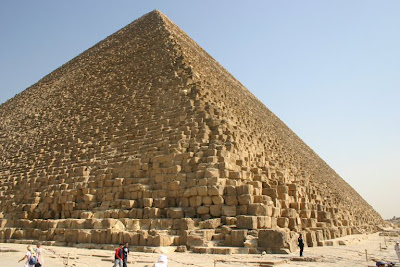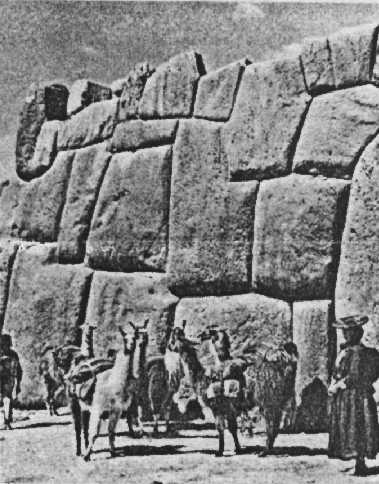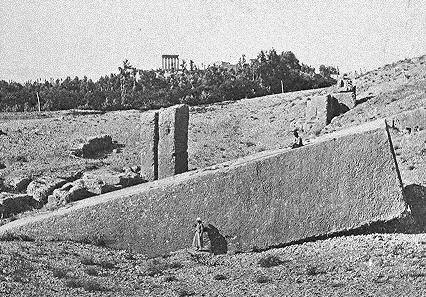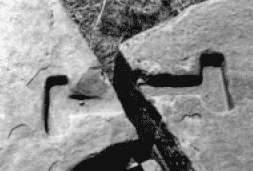For centuries, people have theorized how the great pyramids were built. Some have suggested that they must have been constructed by extraterrestrials, while others believe the Egyptians possessed a technology that has been lost through the ages.
But the process of building pyramids, while complicated, was not as colossal an undertaking as many of us believe, Redford says. Estimates suggest that between 20,000 and 30,000 laborers were needed to build the Great Pyramid at Giza in less than 23 years. By comparison, Notre Dame Cathedral in Paris took almost 200 years to complete.
According to Redford, pharaohs traditionally began building their pyramids as soon as they took the throne. The pharaoh would first establish a committee composed of an overseer of construction, a chief engineer and an architect. The pyramids were usually placed on the western side of the Nile because the pharaoh's soul was meant to join with the sun disc during its descent before continuing with the sun in its eternal round. Added Redford, the two deciding factors when choosing a building site were its orientation to the western horizon where the sun set and the proximity to Memphis, the central city of ancient Egypt.
The cores of the pyramids were often composed of local limestone, said Redford. Finer quality limestone composed the outer layer of the pyramids, giving them a white sheen that could be seen from miles away. The capstone was usually made of granite, basalt, or another very hard stone and could be plated with gold, silver or electrum, an alloy of gold and silver, and would also be highly reflective in the bright sun.
Said Redford, the image most people have of slaves being forced to build the pyramids against their will is incorrect. "The concept of slavery is a very complicated problem in ancient Egypt," he noted, "because the legal aspects of indentured servitude and slavery were very complicated." The peasants who worked on the pyramids were given tax breaks and were taken to 'pyramid cities' where they were given shelter, food and clothing, he noted.
According to Redford, ancient Egyptian quarrying methods -- the processes for cutting and removing stone -- are still being studied. Scholars have found evidence that copper chisels were using for quarrying sandstone and limestone, for example, but harder stones such as granite and diorite would have required stronger materials, said Redford. Dolerite, a hard, black igneous rock, was used in the quarries of Aswan to remove granite.
During excavation, massive dolerite "pounders" were used to pulverize the stone around the edge of the granite block that needed to be extracted. According to Redford, 60 to 70 men would pound out the stone. At the bottom, they rammed wooden pegs into slots they had cut, and filled the slots with water. The pegs would expand, splitting the stone, and the block was then slid down onto a waiting boat.
Teams of oxen or manpower were used to drag the stones on a prepared slipway that was lubricated with oil. Said Redford, a scene from a 19th century B.C. tomb in Middle Egypt depicts "an alabaster statue 20 feet high pulled by 173 men on four ropes with a man lubricating the slipway as the pulling went on."
Once the stones were at the construction site, ramps were built to get them into place on the pyramid, said Redford. These ramps were made of mud brick and coated with chips of plaster to harden the surface. "If they consistently raised the ramp course by course as the teams dragged their blocks up, they could have gotten them into place fairly easily," he noted. At least one such ramp still exists, he said.
When answering to skepticism about how such heavy stones could have been moved without machinery, Redford says, "I usually show the skeptic a picture of 20 of my workers at an archaeological dig site pulling up a two-and-a-half ton granite block." He added, "I know it's possible because I was on the ropes too."
http://www.sciencedaily.com/releases/20 ... 104302.htm
Pictured above is the Notre Dame cathedral. Pictured below is the pyramid at giza. As far as what is more complicated, I'd definitely have to give that to the cathedral. Much more pristine, much more aesthetically pleasing, and much much more complicated to build.

Now, note the fact that 20-30k workers were used, and it took 23 years. Also note that the OP says that they failed to move the stones over the ground, which obviously means that they weren't using the correct techniques. It is physically possible to move those stones, it has been demonstrated many times before, so one has to question whether or not Nippon actually had all their research squared away. You can't say that something is impossible simply because you didn't do it correctly.
I also posted that comparison to show the difference between modern architecture and Egyptians pyramids. While they are certainly breathtaking, they are also fairly simplistic, and the shape and the techniques used were well-planned, not unintentional. They knew what they were building, how to build it, and the best way to go about doing it to complete the task in a fairly short amount of time. This involved a great deal of man-power and forethought. The pyramid shape is no accident, the best way to go about building something that big without modern materials and our architectural advancements is to make the bottom really solid. And because it needed to be so big, they started at the bottom and the shape gradually ascends up to a point, and this would have taken quite a lot of time.
If they really had assistance, why wouldn't they use steel beams and concrete instead of granite and limestone? Modern techniques allow us to build up pretty damn far, and much much quicker, without as many workers. For instance, the sears tower took 1500 workers to complete, only took 3 years to finish, and is about 1500 feet tall. Whereas the pyramid at giza is about 1/3 as tall, took 15 times the amount of workers and 7.5 times the amount of years to finish.
The pyramids are an impressive feat of engineering. Do they rival modern architectural techniques? Absolutely not.
Source of information on the Sears tower comes from the website:
Chicago tribune wrote:Today's the day--
Sears Tower becomes tallest of the tall
(c) Chicago Tribune, May 3, 1973
With its topping out today, Chicago's Sears Tower will become the world's tallest building towering above other famous skyscrapers around the world. Ironworkers will bolt the last steel girder into place atop the 100-story, 1,454-foot structure today. More than 1,500 men have worked on the building since construction began in 1970. The building which is scheduled for completion next year, will provide more more than 4.4 million square feet of office space and will have cost more than $150 million.
http://www.searstower.org/articles.html























 - By wat0n
- By wat0n